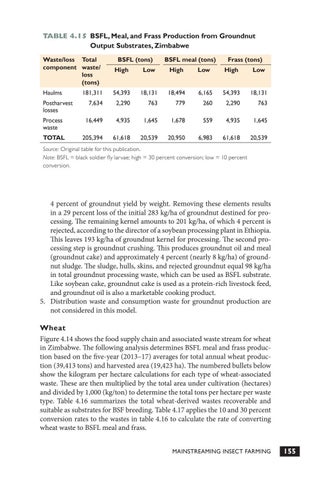TABLE 4.15 BSFL, Meal, and Frass Production from Groundnut Output Substrates, Zimbabwe Waste/loss Total component waste/ loss (tons)
High
Low
High
Low
High
Low
Haulms
181,311
54,393
18,131
18,494
6,165
54,393
18,131
7,634
2,290
763
779
260
2,290
763
Process waste
16,449
4,935
1,645
1,678
559
4,935
1,645
TOTAL
205,394
61,618
20,539
20,950
6,983
61,618
20,539
Postharvest losses
BSFL (tons)
BSFL meal (tons)
Frass (tons)
Source: Original table for this publication. Note: BSFL = black soldier fly larvae; high = 30 percent conversion; low = 10 percent conversion.
4 percent of groundnut yield by weight. Removing these elements results in a 29 percent loss of the initial 283 kg/ha of groundnut destined for processing. The remaining kernel amounts to 201 kg/ha, of which 4 percent is rejected, according to the director of a soybean processing plant in Ethiopia. This leaves 193 kg/ha of groundnut kernel for processing. The second processing step is groundnut crushing. This produces groundnut oil and meal (groundnut cake) and approximately 4 percent (nearly 8 kg/ha) of groundnut sludge. The sludge, hulls, skins, and rejected groundnut equal 98 kg/ha in total groundnut processing waste, which can be used as BSFL substrate. Like soybean cake, groundnut cake is used as a protein-rich livestock feed, and groundnut oil is also a marketable cooking product. 5. Distribution waste and consumption waste for groundnut production are not considered in this model. Wheat Figure 4.14 shows the food supply chain and associated waste stream for wheat in Zimbabwe. The following analysis determines BSFL meal and frass production based on the five-year (2013–17) averages for total annual wheat production (39,413 tons) and harvested area (19,423 ha). The numbered bullets below show the kilogram per hectare calculations for each type of wheat-associated waste. These are then multiplied by the total area under cultivation (hectares) and divided by 1,000 (kg/ton) to determine the total tons per hectare per waste type. Table 4.16 summarizes the total wheat-derived wastes recoverable and suitable as substrates for BSF breeding. Table 4.17 applies the 10 and 30 percent conversion rates to the wastes in table 4.16 to calculate the rate of converting wheat waste to BSFL meal and frass. Mainstreaming Insect Farming
155








